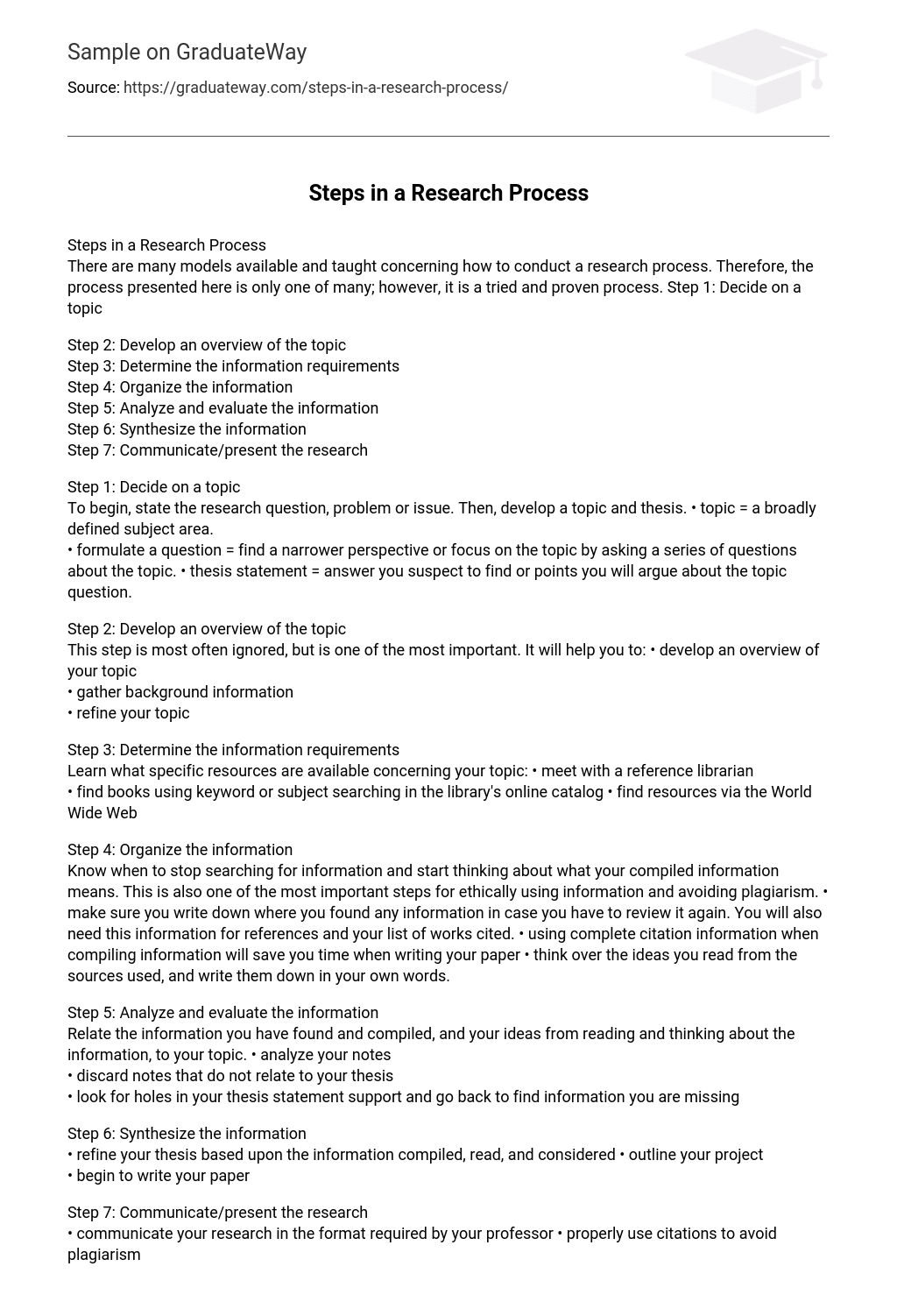There are many models available and taught concerning how to conduct a research process. Therefore, the process presented here is only one of many; however, it is a tried and proven process.
Step 1: Decide on a topic
Step 2: Develop an overview of the topic
Step 3: Determine the information requirements
Step 4: Organize the information
Step 5: Analyze and evaluate the information
Step 6: Synthesize the information
Step 7: Communicate/present the research
Step 1: Decide on a topic
To begin, state the research question, problem or issue. Then, develop a topic and thesis.
- topic = a broadly defined subject area.
- formulate a question = find a narrower perspective or focus on the topic by asking a series of questions about the topic.
- thesis statement = answer you suspect to find or points you will argue about the topic question.
Step 2: Develop an overview of the topic
This step is most often ignored, but is one of the most important. It will help you to:
- develop an overview of your topic
- gather background information
- refine your topic
Step 3: Determine the information requirements
Learn what specific resources are available concerning your topic:
- meet with a reference librarian
- find books using keyword or subject searching in the library’s online catalog
- find resources via the World Wide Web
Step 4: Organize the information
Know when to stop searching for information and start thinking about what your compiled information means. This is also one of the most important steps for ethically using information and avoiding plagiarism.
- make sure you write down where you found any information in case you have to review it again. You will also need this information for references and your list of works cited.
- using complete citation information when compiling information will save you time when writing your paper
- think over the ideas you read from the sources used, and write them down in your own words.
Step 5: Analyze and evaluate the information
Relate the information you have found and compiled, and your ideas from reading and thinking about the information, to your topic.
- analyze your notes
- discard notes that do not relate to your thesis
- look for holes in your thesis statement support and go back to find information you are missing
Step 6: Synthesize the information
- refine your thesis based upon the information compiled, read, and considered
- outline your project
- begin to write your paper
Step 7: Communicate/present the research
- communicate your research in the format required by your professor
- properly use citations to avoid plagiarism





